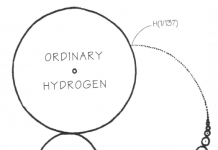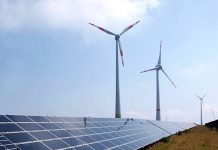by Debra Fiakas CFA
The atmosphere started getting uncomfortably hot for power developer Abengoa SA (ABGB: Nasdaq) in early August last year – and it was not just the seasonal high temperatures in the company’s home town of Seville, Spain. Management had finally admitted that operations could not generate as much cash as previously expected, causing worries about Abengoa’s ability to meet debt obligations. At the heart of the company’s cash flow woes is the reversal of Spain’s policies on solar power that has reduced subsidies and feed-in tariffs for solar power producers.
In August 2015, Abengoa also announced plans to raise capital by selling 650 million euros (US$715 million) in common stock and 500 million euros in assets (US$550 million). The plan was to pay down debt thereby reducing future interest and principal obligations. At the time the company had about 9.0 billion euros in debt (US$9.9 billion).
The company’s share price had already been weakened by rumors, but the news sent the stock plummeting to historic lows. After stabilizing for a several months near the $5.00 level, ABGB was gain sent into a free fall last month with more negative news on Abengoa’s cash and debt woes. The company has asked for protection from creditors, a precursor to declaration of bankruptcy. The stock price at the time of this article was just a few pennies over a dollar.
The question for investors is whether Abengoa’s share price is oversold, opening a window of opportunity for equity investor with an eye for deep value.
It is the calendar more than anything that has spooked shareholders and bond holders. Abengoa has 500 million euros in bonds (US$530 million) coming due in March 2016. The plan to sell equity appeared to be a viable solution until one of the largest equity investors pulled out in late November 2015, citing Abengoa’s failure to meet prerequisites for the financing. Other than a 106 million euro line of credit to pay employees (US116 million), the company’s creditors have appeared reluctant to refinance the debt. There appears to be little time for Abengoa to reach an orderly resolution to its balance sheet problems.
A financial solution might require a restructuring of the company and its many operating subsidiaries and investments. Abengoa has already been selling assets, including shares of Abengoa Yield, plc (ABY: Nasdaq). Abengoa now owns less than half of the ‘yield-co,’ which is a portfolio of power generation and electricity transmission assets in the Americas and Europe that were originally developed by Agengoa SA.
Unlike its sponsor, Abengoa Yield is profitable, reporting US$674 million in revenue and US$7.4 million in net income in the twelve months ending September 2015. Operating cash flow generated during that period was $282.9 million, making it possible for Abengoa Yield to support US$7.3 billion in debt and still provide shareholders with US$1.72 in annual dividends per share. The recently negotiated line of credit is secured with the Abengoa’s yield-co shares.
There appears to be a great deal of uncertainty for Abengoa. Even decision makers at the yield-co are hedging against a demise of their sponsor by proposing a change in the name from Abengoa Yield to Atlantica Yield. Thus as tempting as the ABGB price might seem, perhaps it would be more prudent to take a position in Abengoa “Atlantica” Yield and collect a dividend. The current yield is 10.0% and ABY shares are trading at 11.2 times forward earnings.
Debra Fiakas is the Managing Director of Crystal Equity Research, an alternative research resource on small capitalization companies in selected industries.
Neither the author of the Small Cap Strategist web log, Crystal Equity Research nor its affiliates have a beneficial interest in the companies mentioned herein.




